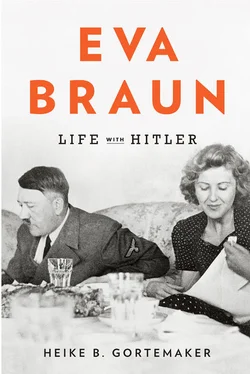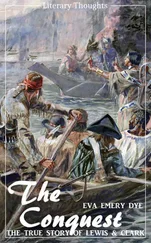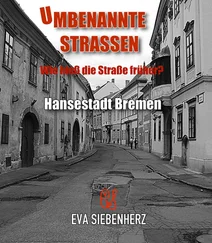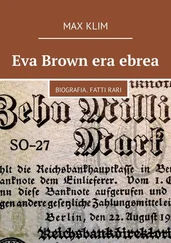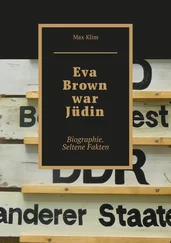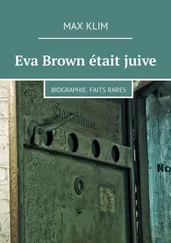In Obersalzberg and Berlin as well, Hoffmann was there as Hitler’s constant companion. 36Despite never holding an official position in the government or the Party, the photographer enjoyed a position of trust—and thus power—that important Party members such as Goebbels or Bormann envied, thanks to his practically unlimited access to Hitler until 1944. Others, such as Otto Wagener, head of the political-economic department of the Nazi Party, were annoyed that Hitler would occasionally discuss “the most secret matters in the presence of his close companions.” Wagener “sometimes heard something of truly decisive importance only by complete accident from the photographer, Hoffmann.” 37
But why did Hitler choose Hoffmann in particular—someone known as a hard-drinking bon vivant, someone whose character and habits actually didn’t match his at all—as his confidant and constant companion? It is an important question because the relations between Hitler and Hoffmann are analogous to the relationship between Hitler and Eva Braun. She, too, seemed not to match her lover, either in outward appearance or in inner temperament. Hoffmann and Hitler were connected by their similar experiences in World War I, their nationalistic and anti-Semitic convictions, their petit bourgeois backgrounds, and their early ambitions to be artists. Nevertheless, what was decisive for Hoffmann’s status as “personal photographer” was his absolute loyalty and fidelity to Hitler himself, which he made clear from the beginning. Hoffmann followed to the letter any and all of the restrictions on photographing or publishing that were imposed upon him, and retouched his pictures according to instructions. 38Hitler in turn ensured that the position of his personal photojournalist remained more or less unofficial to the end, so that Hoffmann remained dependent on him and under his control at all times.
In fact, Hoffmann was not only Hitler’s fellow Party member, friend, and photographer, but a kind of go-between—even, in a sense, his private ambassador—in ways that crossed the boundaries between propaganda work, private life, and, later, political activities in the realm of art. It was at Hoffmann’s house that Hitler could meet Eva Braun for afternoon tea or dinner, informally and out of the public eye. 39And it was Hoffmann to whom Hitler entrusted his girlfriend when she accompanied him to Party events, unbeknownst to the uninitiated, under the guise of an “official photographer of the NSDAP.” Financial transactions concerning Braun, too, such as the purchase of a house, were carried out via Hoffmann in the early years. At the same time, Hitler also entrusted him with political tasks far outside the purview of a propaganda photographer, and for which Hoffmann actually had no experience. For example, Hoffmann was allowed to select artworks for the prestigious “House of German Art” (Haus der Deutschen Kunst) exhibit in Munich in 1937, to the amazement and annoyance of several contemporaries, and was later placed in charge of the “Great German Art Exhibition” that was held yearly. Hoffmann became Hitler’s personal art adviser and art buyer, in which capacity he committed art theft on a grand scale. As further signs of the position of trust he enjoyed, he was made a member of the Committee for the Utilization of Products of Degenerate Art, as established by Goebbels in May 1938, and was granted a professorship in July of the same year. 40
During the preparations for war against Poland, and the signing of the Nonaggression Pact with the Soviet Union which Hitler pursued to that end, Hitler even promoted his friend to Special Ambassador and sent him with Foreign Minister Joachim von Ribbentrop’s delegation to Moscow on the evening of August 22, 1939. Hoffmann later boasted that he was supposed not only to photograph the event, but, more important, to report back to Hitler about Stalin and his entourage. 41The reason for this was not least that Hoffmann was indispensable to Hitler as an informer: the loyal factotum would have access to everyone in Moscow and be able to give Hitler rumors and information about the behavior of everyone there—including the Germans. “Keep your eyes and ears open” was Hoffmann’s assignment. As a result, it is hardly surprising that Ribbentrop suggested, after the fact, that Stalin had objected to Hoffmann’s “activities.” 42In fact, Hoffmann’s presence must have displeased Ribbentrop as well, and also Friedrich-Werner Graf von der Schulenburg, the German ambassador.
It would therefore considerably understate Hoffmann’s importance to describe him merely as an “interlocutor” of Hitler’s, who enjoyed “the fool’s freedom” to say what he wanted and who, in contrast to the “Führer,” understood nothing about politics so that Hitler’s conversations with him about politics were useless. 43Hoffmann himself fostered this interpretation in his postwar memoirs by presenting himself as an apolitical person, for obvious reasons. 44During the denazification proceedings in 1947–1948, while the press labeled him one of the “greediest parasites of the Hitler plague,” and his own goal was to establish the greatest possible plausible distance between himself and the Nazi system in order to save his own life and livelihood, he cast his role in an even more modest light. In an unpublished defense attestation from 1947 he insisted that he had “avoided political topics” with Hitler, and that Hitler had come under the “bad influence” of others and was no longer receptive to “advice from familial circles.” His “task,” Hoffmann claimed, consisted primarily in fulfilling the wishes of other people around Hitler. He countered the charge of having been a leading propagandist for the NSDAP by pointing out that his name had never appeared in the official National Socialist registers and that the office of a “Reich Photographic Correspondent” did not even exist. 45
That was indeed the case: no official position with this name did exist. Nonetheless, ever since 1933 when he opened a branch of his business in Berlin (“Hoffmann Press,” 10 Kochstrasse), Hoffmann on his own initiative had included the title of “Reich Photographic Correspondent of the NSDAP (Member of the Reich Association of German Correspondents and News Office e.V.)” in his correspondence. In Munich, along with his Photohaus, he owned the “Brown Photo Shop” on 10 Barer Strasse as well as the “National Socialist Picture Press” at 74 Theresienstrasse. 46With his books of photographs—vetted by Hitler—that were printed in the millions, titles such as (in German) Hitler in His Mountains (1935), The Hitler Nobody Knows (1936), Hitler Off Duty (1937), and Hitler Conquers the German Heart (1938), Hoffmann filled an important function in the “Führer propaganda” system. He single-handedly shaped the personal side of Hitler’s “Führer image” with his purported insider’s snapshots and cast Hitler as the “father of the nation,” in his early years as Chancellor, by suggesting a closeness between the “leader” and the “fellow people” that did not exist. The fact that Hoffmann held no official government position and did not pursue his career in the Party, but rather remained directly connected to Hitler purely by loyalty and true belief, was in fact prerequisite for his unique field of operations. It obviously made sense for Hoffmann, under pressure from the denazification authorities, to describe his relationship with Hitler as having been of a purely “private nature.” Hoffmann’s excuse that he was merely an “employee” who “occasionally used” the title of Reich Photographic Correspondent in his correspondence must also be understood against the background of the Munich denazification court’s decision of January 1947, which included him among the group of “major offenders” and sentenced him to ten years of labor camp and the confiscation of his assets. 47
Читать дальше
